The Vampire Chronicles Collection Read online
PRAISE FOR ANNE RICE
INTERVIEW WITH THE VAMPIRE
“Unrelentingly erotic … Sometimes beautiful, and always unforgettable.”
—The Washington Post
“Bona fide blockbuster … Audacious, erotic, and unforgettable … An unmitigated terror trip not meant for the weak of heart … His ghastly initiation into the netherworld is as mesmeric as is the discovery he is not alone in the nightly search for warm fresh blood.”
—The Cincinnati Enquirer
“If you surrender and go with her … you have surrendered to enchantment, as in a voluptuous dream.”
—The Boston Globe
“A chilling, thought-provoking tale, beautifully frightening, sensuous and utterly unnerving.”
—The Hartford Courant
“Sensational and fantastic … Woven with uncanny magic … Hypnotically poetic in tone, rich in sensory imagery, and dense with the darkness that lies behind the veil of human thought.”
—St. Louis Post-Dispatch
“A masterful suspense story … [that] plumbs the deepest recesses of human sensuality … From the beginning we are seduced, hypnotized by the voice of the vampire.”
—Chicago Tribune
THE VAMPIRE LESTAT
“Fiercely ambitious, nothing less than a complete unnatural history of vampires.”
—The Village Voice
“Brilliant … Its undead characters are utterly alive.”
—The New York Times Book Review
“Luxuriantly created and richly told.”
—The Cleveland Plain Dealer
“Here, then, is the vampire Lestat … come to dreadful and dazzling life, holding the power to haunt our imaginations and beckoning us to some sense of magic inside ourselves.… Vive Lestat!”
—The Houston Post
“A worthy successor to Interview … She may very well be this century’s Mary Shelley.”
—The Kansas City Star
“Fascinating … A novel to be savored … A rich and unforgettable tale of dazzling scenes and vivid personalities.”
—Library Journal
THE QUEEN OF THE DAMNED
“A wonderful web of dark-side mythology … Mesmerizing.”
—San Francisco Chronicle
“Exhilarating … Rice is equally adept at evoking rainswept Paris streets, concert-hall mayhem, and ramshackle mansions in New Orleans. She’s a very sensual writer.”
—Newsday
“Imaginative … Intelligently written … This is popular fiction of the highest order.”
—USA Today
“A welcome chance to catch up with old fiends … Fascinating … When we emerge from its folds, there’s good news on the last page: ‘The chronicle of the vampires will continue.’ Yum.”
—The Philadelphia Inquirer
“A tour de force.”
—The Boston Globe
BY ANNE RICE
The Vampire Chronicles
Interview with the Vampire*
The Vampire Lestat*
The Queen of the Damned*
The Tale of the Body Thief*
Memnoch the Devil*
The Vampire Armand*
Blood and Gold*
Blackwood Farm*
Lives of the Mayfair Witches
The Witching Hour*
Lasher*
Taltos*
A Vampire/Witches Chronicle
Merrick*
New Tales of the Vampires
Pandora*
Vittorio, The Vampire*
The Feast of All Saints*
Cry to Heaven*
The Mummy: Or Ramses the Damned*
Servant of the Bones*
Violin*
UNDER THE NAME ANNE RAMPLING:
Exit to Eden*
Belinda
EROTICA UNDER THE NAME A. N. ROQUELAURE:
The Claiming of Sleeping Beauty
Beauty’s Punishment
Beauty’s Release
*Published by Ballantine Books
A Ballantine Book
Published by The Random House Publishing Group
Interview with the Vampire copyright © 1976 by Anne O’Brien Rice
The Vampire Lestat copyright © 1985 by Anne O’Brien Rice
The Queen of the Damned copyright © 1988 by Anne O’Brien Rice
All rights reserved under International and Pan-American Copyright Conventions. Published in the United States by Ballantine Books, an imprint of The Random House Publishing Group, a division of Random House, Inc., New York, and simultaneously in Canada by Random House of Canada Limited Toronto.
Interview with the Vampire was originally published by Alfred A. Knopf, a division of Random House, Inc., in 1976. The Vampire Lestat was originally published by Alfred A. Knopf, a division of Random House, Inc., in 1985. The Queen of the Damned was originally published by Alfred A. Knopf, a division of Random House, Inc., in 1988.
Portions of The Vampire Lestat originally appeared in The Twilight Zone magazine
Poems by Stan Rice quoted in The Queen of the Damned were originally published in:
Some Lamb by Stan Rice © 1975 by Stan Rice. Published by The Figures Reprinted by permission of Stan Rice.
Whiteboy by Stan Rice © 1976 by Stan Rice. Published by Mudra. Reprinted by permission of Stan Rice.
Body of Work by Stan Rice © 1983 by Stan Rice. Reprinted by permission of Lost Roads Publishers.
Untitled poem by Stan Rice in The Queen of the Damned copyright © 1988 by Stan Rice
Ballantine and colophon are registered trademarks of Random House, Inc.
www.ballantinebooks.com
Library of Congress Control Number: 2002092626
eISBN: 978-0-307-76254-2
This edition published by arrangement with Alfred A. Knopf, a division of Random House, Inc.
v3.1
Contents
Cover
Other Books by This Author
Title Page
Copyright
Interview with the Vampire
Part I
Part II
Part III
Part IV
The Vampire Lestat
Downtown Saturday Night in the Twentieth Century
Part I - Lelio Rising
Chapter 1
Chapter 2
Chapter 3
Chapter 4
Chapter 5
Chapter 6
Chapter 7
Chapter 8
Part II - The Legacy of Magnus
Chapter 1
Chapter 2
Chapter 3
Chapter 4
Chapter 5
Chapter 6
Chapter 7
Chapter 8
Chapter 9
Chapter 10
Chapter 11
Chapter 12
Chapter 13
Part III - Viaticum for the Marquies
Chapter 1
Chapter 2
Chapter 3
Chapter 4
Chapter 5
Chapter 6
Chapter 7
Chapter 8
Chapter 9
Part IV - The Children of Darkness
Chapter 1
Chapter 2
Chapter 3
Chapter 4
Chapter 5
Chapter 6
Part V - The Vampire Armand
Chapter 1
Chapter 2
Chapter 3
Chapter 4
Chapter 5
Part VI - On the Devil’s Road from Paris to Cairo
Chapter 1
Chapter 2
Chapter 3
Chapter 4
>
Chapter 5
Chapter 6
Chapter 7
Part VII - Ancient Magic, Ancient Mysteries
Chapter 1
Chapter 2
Chapter 3
Chapter 4
Chapter 5
Chapter 6
Chapter 7
Chapter 8
Chapter 9
Chapter 10
Chapter 11
Chapter 12
Chapter 13
Chapter 14
Chapter 15
Chapter 16
Chapter 17
Epilogue: Interview with the Vampire
Dionysus in San Francisco - 1985
The Queen of the Damned
Contents
Proem
Part I: The Road to the Vampire Lestat
1: The Legend of the Twins
2: The Short Happy Life of Baby Jenks and the Fang Gang
3: The Goddess Pandora
4: The Story of Daniel, the Devil’s Minion, or the Boy from Interview with the Vampire
5: Khayman, My Khayman
6: The Story of Jesse, the Great Family, and the Talamasca
Part II: All Hallow’s Eve
Part III: As it was in the Beginning, Is Now, and Ever Shall Be …
1: Lestat: In the Arms of the Goddess
2: Marius: Coming Together
3: Lestat: The Queen of Heaven
4 The Story of the Twins Part I
5: Lestat: This Is My Body; This Is My Blood
6: The Story of the Twins Part II
7: Lestat: The Kingdom of Heaven
8: The Story of the Twins Conclusion
Part IV: The Queen of the Damned
Part V: … World Without End, Amen
INTERVIEW
WITH THE
VAMPIRE
PART I
ISEE …” said the vampire thoughtfully, and slowly he walked across the room towards the window. For a long time he stood there against the dim light from Divisadero Street and the passing beams of traffic. The boy could see the furnishings of the room more clearly now, the round oak table, the chairs. A wash basin hung on one wall with a mirror. He set his briefcase on the table and waited.
“But how much tape do you have with you?” asked the vampire, turning now so the boy could see his profile. “Enough for the story of a life?”
“Sure, if it’s a good life. Sometimes I interview as many as three or four people a night if I’m lucky. But it has to be a good story. That’s only fair, isn’t it?”
“Admirably fair,” the vampire answered. “I would like to tell you the story of my life, then. I would like to do that very much.”
“Great,” said the boy. And quickly he removed the small tape recorder from his briefcase, making a check of the cassette and the batteries. “I’m really anxious to hear why you believe this, why you …”
“No,” said the vampire abruptly. “We can’t begin that way. Is your equipment ready?”
“Yes,” said the boy.
“Then sit down. I’m going to turn on the overhead light.”
“But I thought vampires didn’t like light,” said the boy. “If you think the dark adds to the atmosphere …” But then he stopped. The vampire was watching him with his back to the window. The boy could make out nothing of his face now, and something about the still figure there distracted him. He started to say something again but he said nothing. And then he sighed with relief when the vampire moved towards the table and reached for the overhead cord.
At once the room was flooded with a harsh yellow light. And the boy, staring up at the vampire, could not repress a gasp. His fingers danced backwards on the table to grasp the edge. “Dear God!” he whispered, and then he gazed, speechless, at the vampire.
The vampire was utterly white and smooth, as if he were sculpted from bleached bone, and his face was as seemingly inanimate as a statue, except for two brilliant green eyes that looked down at the boy intently like flames in a skull. But then the vampire smiled almost wistfully, and the smooth white substance of his face moved with the infinitely flexible but minimal lines of a cartoon. “Do you see?” he asked softly.
The boy shuddered, lifting his hand as if to shield himself from a powerful light. His eyes moved slowly over the finely tailored black coat he’d only glimpsed in the bar, the long folds of the cape, the black silk tie knotted at the throat, and the gleam of the white collar that was as white as the vampire’s flesh. He stared at the vampire’s full black hair, the waves that were combed back over the tips of the ears, the curls that barely touched the edge of the white collar.
“Now, do you still want the interview?” the vampire asked.
The boy’s mouth was open before the sound came out. He was nodding. Then he said, “Yes.”
The vampire sat down slowly opposite him and, leaning forward, said gently, confidentially, “Don’t be afraid. Just start the tape.”
And then he reached out over the length of the table. The boy recoiled, sweat running down the sides of his face. The vampire clamped a hand on the boy’s shoulder and said, “Believe me, I won’t hurt you. I want this opportunity. It’s more important to me than you can realize now. I want you to begin.” And he withdrew his hand and sat collected, waiting.
It took a moment for the boy to wipe his forehead and his lips with a handkerchief, to stammer that the microphone was in the machine, to press the button, to say that the machine was on.
“You weren’t always a vampire, were you?” he began.
“No,” answered the vampire. “I was a twenty-five-year-old man when I became a vampire, and the year was seventeen ninety-one.”
The boy was startled by the preciseness of the date and he repeated it before he asked, “How did it come about?”
“There’s a simple answer to that. I don’t believe I want to give simple answers,” said the vampire. “I think I want to tell the real story.…”
“Yes,” the boy said quickly. He was folding his handkerchief over and over and wiping his lips now with it again.
“There was a tragedy …” the vampire started. “It was my younger brother.… He died.” And then he stopped, so that the boy cleared his throat and wiped at his face again before stuffing the handkerchief almost impatiently into his pocket.
“It’s not painful, is it?” he asked timidly.
“Does it seem so?” asked the vampire. “No.” He shook his head. “It’s simply that I’ve only told this story to one other person. And that was so long ago. No, it’s not painful.…
“We were living in Louisiana then. We’d received a land grant and settled two indigo plantations on the Mississippi very near New Orleans.…”
“Ah, that’s the accent …” the boy said softly.
For a moment the vampire stared blankly. “I have an accent?” He began to laugh.
And the boy, flustered, answered quickly. “I noticed it in the bar when I asked you what you did for a living. It’s just a slight sharpness to the consonants, that’s all. I never guessed it was French.”
“It’s all right,” the vampire assured him. “I’m not as shocked as I pretend to be. It’s only that I forget it from time to time. But let me go on.…”
“Please …” said the boy.
“I was talking about the plantations. They had a great deal to do with it, really, my becoming a vampire. But I’ll come to that. Our life there was both luxurious and primitive. And we ourselves found it extremely attractive. You see, we lived far better there than we could have ever lived in France. Perhaps the sheer wilderness of Louisiana only made it seem so, but seeming so, it was. I remember the imported furniture that cluttered the house.” The vampire smiled. “And the harpsichord; that was lovely. My sister used to play it. On summer evenings, she would sit at the keys with her back to the open French windows. And I can still remember that thin, rapid music and the vision of the swamp rising beyond her, the moss-hung cypresses floating against the sky. And there we
re the sounds of the swamp, a chorus of creatures, the cry of the birds. I think we loved it. It made the rosewood furniture all the more precious, the music more delicate and desirable. Even when the wisteria tore the shutters off the attic windows and worked its tendrils right into the whitewashed brick in less than a year.… Yes, we loved it. All except my brother. I don’t think I ever heard him complain of anything, but I knew how he felt. My father was dead then, and I was head of the family and I had to defend him constantly from my mother and sister. They wanted to take him visiting, and to New Orleans for parties, but he hated these things. I think he stopped going altogether before he was twelve. Prayer was what mattered to him, prayer and his leatherbound lives of the saints.
“Finally I built him an oratory removed from the house, and he began to spend most of every day there and often the early evening. It was ironic, really. He was so different from us, so different from everyone, and I was so regular! There was nothing extraordinary about me whatsoever.” The vampire smiled.
“Sometimes in the evening I would go out to him and find him in the garden near the oratory, sitting absolutely composed on a stone bench there, and I’d tell him my troubles, the difficulties I had with the slaves, how I distrusted the overseer or the weather or my brokers … all the problems that made up the length and breadth of my existence. And he would listen, making only a few comments, always sympathetic, so that when I left him I had the distinct impression he had solved everything for me. I didn’t think I could deny him anything, and I vowed that no matter how it would break my heart to lose him, he could enter the priesthood when the time came. Of course, I was wrong.” The vampire stopped.
For a moment the boy only gazed at him and then he started as if awakened from deep thought, and he floundered, as if he could not find the right words. “Ah … he didn’t want to be a priest?” the boy asked. The vampire studied him as if trying to discern the meaning of his expression. Then he said:
“I meant that I was wrong about myself, about my not denying him anything.” His eyes moved over the far wall and fixed on the panes of the window. “He began to see visions.”
“Real visions?” the boy asked, but again there was hesitation, as if he were thinking of something else.

 Interview with the Vampire
Interview with the Vampire Christ the Lord: Out of Egypt
Christ the Lord: Out of Egypt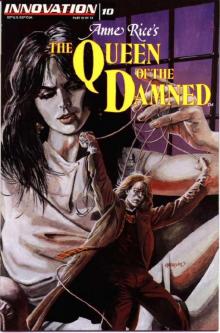 The Queen Of The Damned
The Queen Of The Damned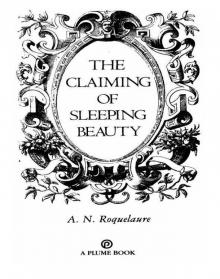 The Claiming of Sleeping Beauty
The Claiming of Sleeping Beauty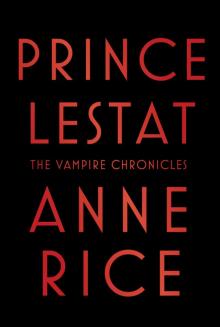 Prince Lestat
Prince Lestat The Master of Rampling Gate
The Master of Rampling Gate The Vampire Lestat
The Vampire Lestat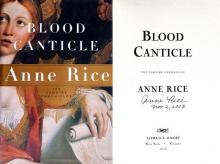 Blood Canticle
Blood Canticle Beauty's Release
Beauty's Release Pandora
Pandora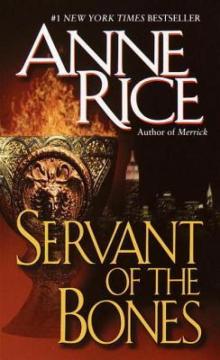 Servant of the Bones
Servant of the Bones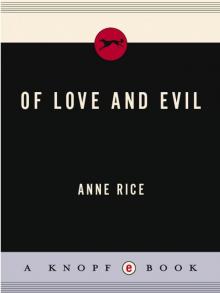 Of Love and Evil
Of Love and Evil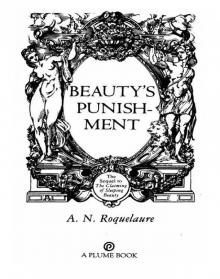 Beauty's Punishment
Beauty's Punishment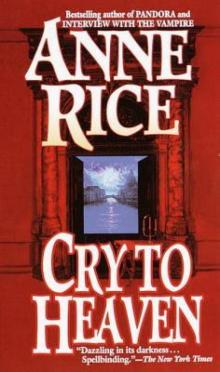 Cry to Heaven
Cry to Heaven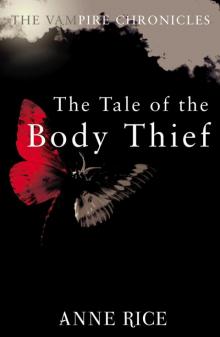 The Tale of the Body Thief
The Tale of the Body Thief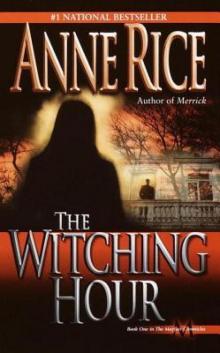 The Witching Hour
The Witching Hour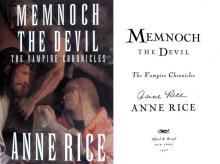 Memnoch the Devil
Memnoch the Devil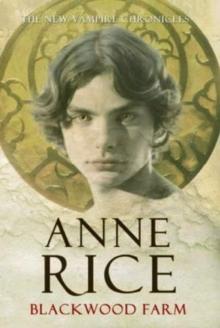 Blackwood Farm
Blackwood Farm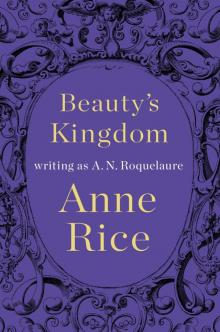 Beauty's Kingdom
Beauty's Kingdom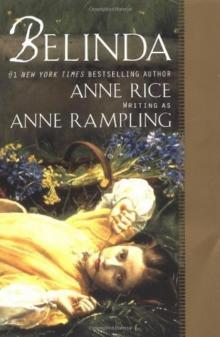 Belinda
Belinda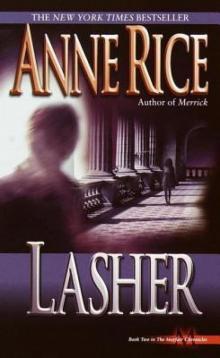 Lasher
Lasher Vittorio, the Vampire
Vittorio, the Vampire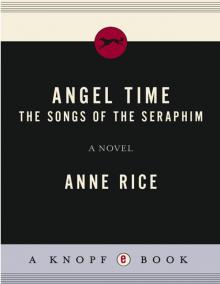 Angel Time
Angel Time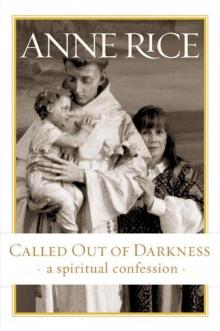 Called Out of Darkness: A Spiritual Confession
Called Out of Darkness: A Spiritual Confession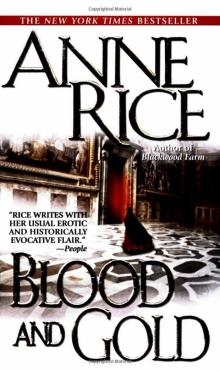 Blood And Gold
Blood And Gold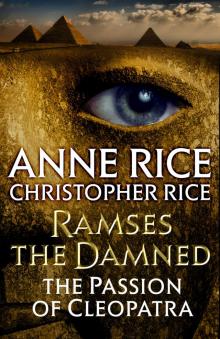 The Passion of Cleopatra
The Passion of Cleopatra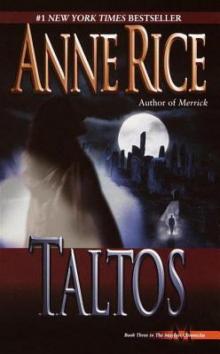 Taltos
Taltos Exit to Eden
Exit to Eden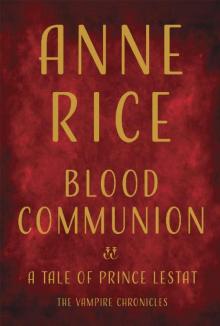 Blood Communion (The Vampire Chronicles #13)
Blood Communion (The Vampire Chronicles #13) The Wolf Gift
The Wolf Gift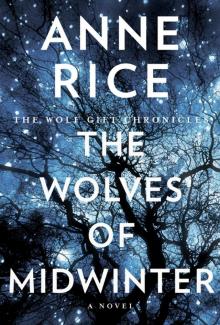 The Wolves of Midwinter
The Wolves of Midwinter Prince Lestat and the Realms of Atlantis
Prince Lestat and the Realms of Atlantis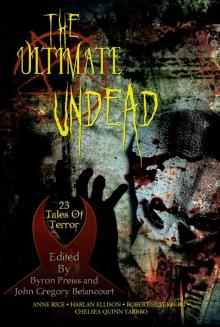 The Ultimate Undead
The Ultimate Undead The Vampire Lestat tvc-2
The Vampire Lestat tvc-2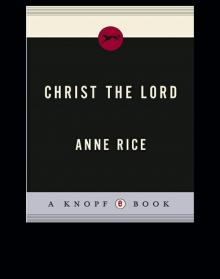 The Road to Cana
The Road to Cana Taltos lotmw-3
Taltos lotmw-3 Merrick tvc-7
Merrick tvc-7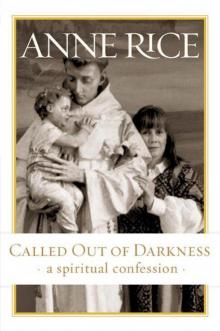 Called Out of Darkness
Called Out of Darkness Pandora - New Vampires 01
Pandora - New Vampires 01 Bllod and Gold
Bllod and Gold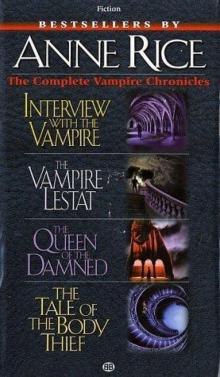 The Queen Of the Damned: Vampire Chronicles
The Queen Of the Damned: Vampire Chronicles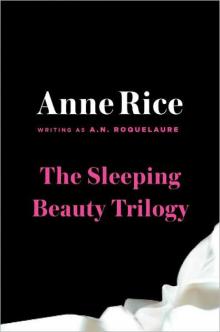 The Sleeping Beauty Trilogy
The Sleeping Beauty Trilogy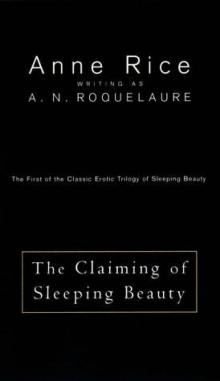 The Claiming of Sleeping Beauty b-1
The Claiming of Sleeping Beauty b-1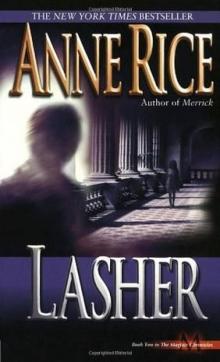 Lasher lotmw-2
Lasher lotmw-2 The Tale of the Body Thief tvc-4
The Tale of the Body Thief tvc-4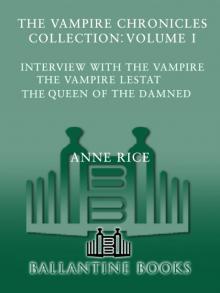 The Vampire Chronicles Collection
The Vampire Chronicles Collection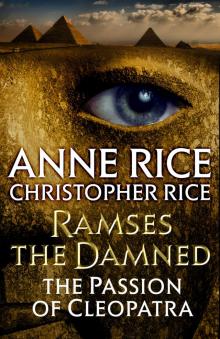 Ramses the Damned
Ramses the Damned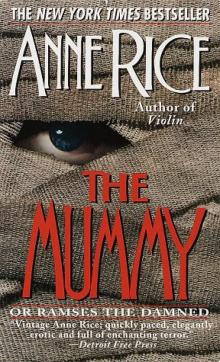 The Mummy - or Ramses the Damned
The Mummy - or Ramses the Damned Vittorio, The Vampire - New Vampires 02
Vittorio, The Vampire - New Vampires 02 The Vampire Armand tvc-6
The Vampire Armand tvc-6 Queen of the Damned tvc-3
Queen of the Damned tvc-3 The witching hour lotmw-1
The witching hour lotmw-1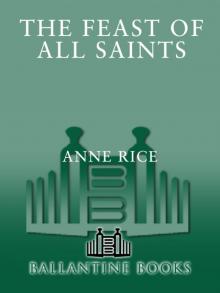 Feast of All Saints
Feast of All Saints Queen of the Damned
Queen of the Damned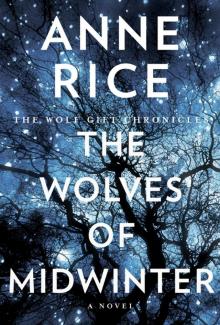 The Wolves of Midwinter twgc-2
The Wolves of Midwinter twgc-2 The Mummy
The Mummy Blood and Gold tvc-8
Blood and Gold tvc-8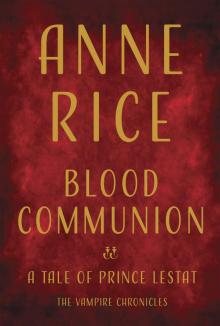 Blood Communion
Blood Communion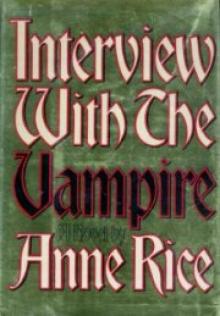 Interview with the Vampire tvc-1
Interview with the Vampire tvc-1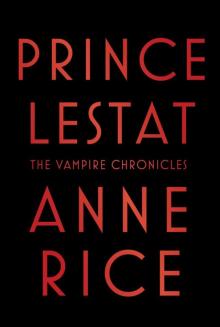 Prince Lestat: The Vampire Chronicles
Prince Lestat: The Vampire Chronicles